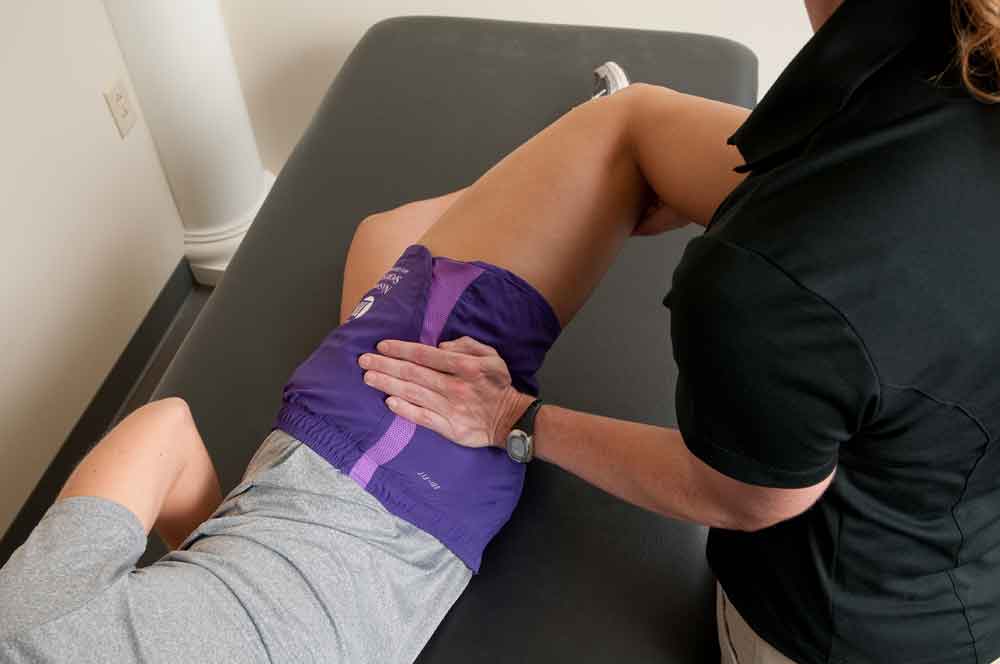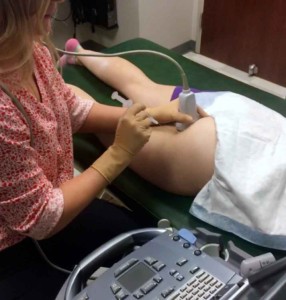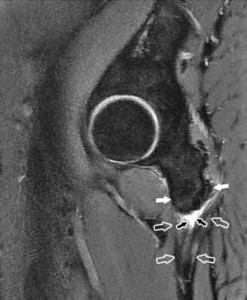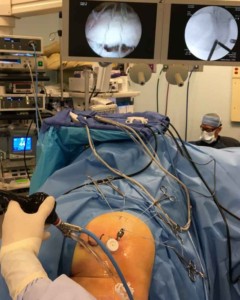Treatment begins with an accurate diagnosis based on the history, exam findings, and various imaging studies. Tendonitis where the hamstring tendons attach to the ischium (sit bone of the pelvis) should be expected to respond to conservative measures, including activity modification, supervised physical therapy, nonsteroidal anti-inflammatory medication, and judicious use of cortisone injections if all else has failed. (Fig1) Even tendinosis, characterized by deterioration or partial tearing within the tendon, can respond to conservative treatment, jumpstarting the body’s healing process.
(Fig2) Cortisone injection has an appropriate role in diminishing inflammation, and there are other products available that might potentiate healing, including platelet rich plasma (PRP) and stem cells. The concept behind potentiating healing with these products is sound, but the science to support their efficacy is, at present, limited. When needed, partial tears and near-complete tears can be effectively managed with endoscopic repair which can be performed as outpatient procedure. (Fig3, Fig4 & Video) Complete ruptures, especially traumatic types associated with retraction, are better served with an open repair, which can be accomplished using a cosmetic incision through the gluteal fold.
This video illustrates the endoscopic repair of this right hamstring deep undersurface tendon tear; reattaching it to the bone of the ischium.
Rehabilitation following hamstring repair can be protracted. Bracing is sometimes necessary to avoid combinations of hip flexion and knee extension that can elongate the hamstring, putting tension on the repair site. Crutches may be necessary for up to 8 weeks, with precautions for the first 4 months.
Location
2004 Hayes Street
Suite 700
Nashville, TN 37203
Office Hours
Monday-Friday:
8:00 am – 5:00 pm



